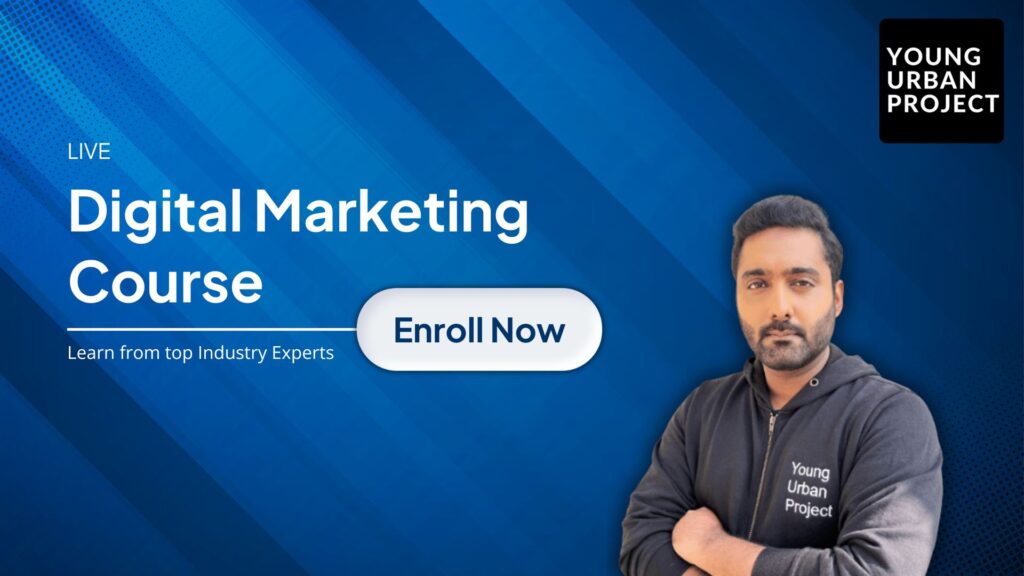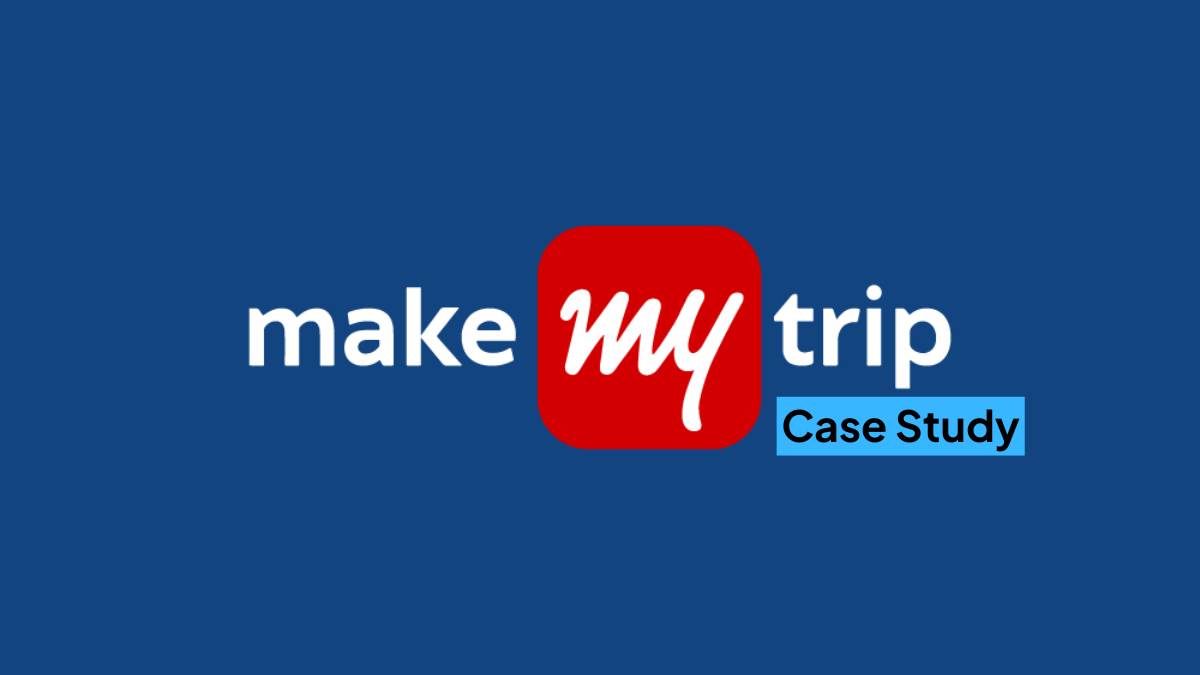If you’ve ever booked a flight or hotel online in India, there’s a good chance you’ve used it, or at least compared prices on it. But what’s more interesting than the bookings is how this company got here. MMT didn’t just pop up overnight. It built itself during a time when Indians were still figuring out what the internet was for.
This MakeMyTrip case study isn’t just about a travel brand, it’s about timing, strategy, some gutsy decisions, and navigating a wildly complex market like India. If you’re a digital marketer, founder, or someone figuring out how to grow a business in India, there’s a lot to pick up here. Not all of it’s perfect, but that’s what makes it useful.
Table of Contents
MakeMyTrip at a Glance
So, how did it all start?
Back in 2000, Deep Kalra (who was an IIM guy and had worked at GE Capital) launched MakeMyTrip. But here’s the twist, it wasn’t meant for Indian users in India. The original idea was to help people in the US (mostly NRIs) book flights to India more easily. At that time, international travel bookings were clunky, and travel agents were the only option.
So MMT stepped in as this digital workaround. It was niche, but it worked.
Then came the India shift
By the mid-2000s, the Indian travel scene started changing. Low-cost airlines were popping up. IRCTC had made it easier to book trains online. And internet usage in India was slowly picking up.
That’s when MMT said, okay, let’s pivot. They started focusing on Indian users booking domestic travel. This decision changed everything. Instead of being just an NRI-focused platform, they became relevant to millions back home.
IPO, redBus, and everything else
In 2010, they went public on NASDAQ. That was huge, especially because Indian internet companies didn’t really get that kind of global attention back then.
Post-IPO, MMT started going big on acquisitions. They picked up small players, expanded into holiday packages, and eventually merged with Goibibo. Then they bought redBus, which gave them a strong foothold in intercity bus travel (a big deal in India, even today).
By now, they weren’t just a flight booking app, they were covering pretty much every part of the travel journey.
Business Model Breakdown
MakeMyTrip works like a typical OTA (Online Travel Agency). They don’t run airlines or own hotels, they’re a platform that connects travelers to service providers. And they make money through two main things:
- Commissions from airlines, hotels, bus operators, etc.
- Convenience fees that users pay during booking (sometimes annoying, but standard in the industry).
What do they actually sell?
Here’s a quick breakdown:
- Flights (domestic and international)
- Hotels
- Holiday packages
- Buses (through redBus)
- Train tickets (IRCTC integration)
- Cabs, airport transfers, and even forex
- And now some travel-financing stuff like TripMoney
Their platform setup
- Website + mobile app: The app has been a major growth driver.
- Corporate travel via MyBiz: They help companies manage business travel.
- Offline touchpoints: Yeah, they still run some physical outlets for people who want that extra help while booking.
So they’re not just a travel app, they’re trying to become a full travel ecosystem. One place for everything.
Also Read: Dunkin’ Donuts Case Study
MakeMyTrip’s Growth Strategy
1. Catching the first wave
When the internet was still new in India, MMT was already up and running. They didn’t wait for the market to mature, they grew alongside it. That helped them build early trust with users, especially at a time when booking online was still a new (and kinda scary) thing for most Indians.
2. Acquisitions that actually made sense
They didn’t just buy companies to expand, they bought smart. The Goibibo merger gave them more scale, and redBus brought a whole new category into their system. It helped them cross-sell and also reduced the chances of people switching to a competitor.
3. Tech + personalization
MMT didn’t just stay as a listing site. Over time, they started using data to personalize what you see, whether it’s flight suggestions, hotel combos, or discounts. The app knows if you’re a budget traveler or someone who books luxury stays, and it tailors the experience accordingly.
4. Betting big on mobile
As soon as it became clear that India was going mobile-first, MMT leaned into it hard. They pushed app-only discounts, flash sales, and gamified booking experiences. The mobile app became their main engine for growth, especially with younger travelers.
Also Read: Zara Case Study
Digital Marketing Masterclass: What Worked
This is where things get really interesting, because MakeMyTrip didn’t just build a product and wait for users to show up. They went all-in on marketing. Smart campaigns, data-backed ads, killer timing, and a whole lot of experimentation.

And honestly, if you want to learn these real-world marketing strategies used by top Indian brands, explore our Digital Marketing Course, it’s built to bridge that frustrating gap between textbook theory and what actually works in the field.
Now, let’s break down what MMT got right.
1. SEO + Content Marketing
MakeMyTrip has invested consistently in content, not just blogs for the sake of traffic, but genuinely helpful travel content. Their destination pages are optimized for search, and they produce seasonal guides around long weekends, festivals, and trending getaways.
So if someone Googles “places to visit near Delhi in July,” there’s a good chance they’ll land on MMT’s content.
And here’s the smart bit: these blogs don’t just inform, they convert. They link straight to relevant packages or hotels. This is that sweet spot where content marketing meets performance.
2. Paid Ads + Performance Marketing
MakeMyTrip has always been aggressive with paid media, especially Google Ads. They dominate search terms like “cheap flights to Goa” or “best hotel deals in Manali.” And they don’t just bid on keywords, they bid smartly based on travel intent.
If you’ve searched for flights to Kerala and then jumped over to YouTube or Insta, you’ve probably seen a MakeMyTrip ad reminding you to complete your booking. Retargeting is baked deep into their funnel.
They also do regional targeting well. Different visuals and offers for different cities, based on local travel trends. That’s how you stretch a performance marketing budget the right way.
Also Read: Starbucks Case Study
3. Influencer + Video Campaigns
One campaign that stood out was the #MyIndia push. It wasn’t just about promoting travel, it was about celebrating domestic destinations post-COVID. They partnered with travel influencers who posted raw, relatable videos of underrated places.
Also, YouTube pre-roll ads during peak travel seasons? That was their turf. You couldn’t escape those 6-second “Book Now” nudges. And they worked, especially when synced with flash sales or festivals.
4. App Marketing & Gamification
This is where they really leaned into growth hacking. MakeMyTrip used every trick in the mobile playbook: push notifications, limited-time flash sales, in-app coupon codes, loyalty points, you name it.
They created this loop where the more you booked, the more benefits you unlocked. So even if a user found a slightly cheaper ticket elsewhere, they’d often stick with MMT because of accumulated points or exclusive offers.
It’s classic gamification, but applied in a way that didn’t feel gimmicky.
5. Email & WhatsApp Campaigns
Ever searched for a flight, bounced, and then suddenly got a mail saying, “Prices for your Mumbai trip are dropping”? That’s them.
Their email strategy is sharp, focused on behavior triggers, not just broad newsletter blasts. Same with WhatsApp, they send trip reminders, deal alerts, and sometimes last-minute hotel discounts if you’re already at your destination.
They know when to message, what to say, and how not to overdo it. That balance is harder than it sounds.
Also Read: Dollar Shave Club Case Study
Building Trust in a Low-Trust Market
Let’s be honest, India is not the easiest place to build consumer trust, especially online. People are skeptical, and one bad experience can go viral in hours.
MakeMyTrip had to earn that trust, and keep earning it.
1. Ratings & Reviews That Actually Help
Every hotel listing on MMT shows user reviews, and they highlight verified stays. That transparency really helps. When people are booking hotels in cities they’ve never been to, reviews are often the deal-maker.
They also allow users to upload photos, which makes it easier to get a real sense of what you’re booking. That alone has probably saved millions of complaints.
2. MMT Assurance: Standing Behind the Booking
They introduced things like free cancellation, 24/7 customer support, and better refund policies over time. Especially during uncertain times (like COVID), that made a huge difference.
Travel plans are fragile, flights get delayed, people change plans last minute. Knowing there’s a support system behind your booking helps users feel safe. That’s a competitive edge most OTAs overlook.
3. Safe Travel Campaign After COVID
After the pandemic, MakeMyTrip ran specific campaigns showing how hotels were following safety protocols, sanitized rooms, contactless check-ins, etc.
They didn’t just say “travel is back”, they showed it. And they weren’t tone-deaf about it. The messaging was cautious, empathetic, and well-timed. That’s how you rebuild trust after an industry-wide shock.
Also Read: Netflix Case Study
Challenges Faced & How MMT Tackled Them
Of course, it hasn’t been all smooth sailing. MMT has hit plenty of bumps, some small, some massive. But how they’ve handled those rough patches is part of what makes this story valuable.
1. Fierce Competition
There was a time when Yatra, Cleartrip, and MakeMyTrip were neck-and-neck. Then came global players like Booking.com and Expedia trying to eat into the Indian market.
To deal with this, MMT didn’t just compete on pricing. They focused on loyalty, better UX, more verticals (like buses, holidays, etc.), and mobile features that made them the default choice for repeat bookings.
2. Pricing Wars & Low Margins
Online travel is brutal when it comes to margins. Everyone’s offering coupons. Everyone’s trying to undercut each other. MMT got caught in that loop too, but they’ve slowly shifted focus toward upselling, cross-selling, and pushing higher-margin products like holiday packages and travel loans.
So instead of just selling cheap flights, they started bundling experiences.
Also Read: Ola Case Study
3. COVID Hit Like a Truck
Let’s not sugarcoat it, the pandemic nearly crushed the travel industry. MMT had to issue mass refunds, deal with angry customers, and figure out how to stay relevant when no one was traveling.
They pivoted hard toward staycations, road trips, self-drive holidays. Basically, anything that didn’t involve planes or crowded hotels. It wasn’t perfect, but it kept the engine running.
4. Tech Glitches & Customer Backlash
Every big tech platform has those moments, servers go down, payments fail, bookings get messed up. MMT’s had its share of those. There were times when people blasted them on social media for poor support or refund delays.
But to their credit, they didn’t ignore the noise. They got better at responding quickly, solving problems, and improving their backend tech to reduce repeat issues.
Also Read: Uniqlo Case Study
Key Takeaways for Aspiring Marketers
Alright, if you’re trying to grow a digital business, or even just understand how Indian consumers behave online, there’s a lot you can learn from MakeMyTrip. Here are some big takeaways worth noting:
1. First-Mover Advantage is Great, but You Have to Keep Evolving
MMT got in early. That gave them an edge. But staying relevant? That took consistent innovation. Whether it was launching an app early or expanding into buses and holiday packages, they kept moving forward. So yeah, being first is awesome, but it’s staying sharp that really keeps you ahead.
2. Performance Marketing Alone Isn’t Enough
They’ve run solid ads, Google, YouTube, the works. But what really works long-term is keeping those users coming back. MMT didn’t just throw money at ads. They built loyalty with gamified rewards, exclusive deals, and a great app experience. If you’re only focused on getting clicks and ignoring retention, you’re leaking money.
3. Use Data for More Than Just Reports
MMT uses data to actually improve what the customer sees. From personalized travel suggestions to timing emails just right, it’s all based on behavior. They’re not showing the same offer to everyone. If you want to win in digital, that kind of targeting matters.
4. Trust Is Hard to Build, and Easy to Lose
This is a big one. In a space like travel, where people are spending thousands and relying on your platform for smooth experiences, one small error can turn into a PR nightmare. MMT has had hiccups but keeps fixing them. They’ve leaned into transparency, better support, real reviews, and clearer refund processes. That stuff builds loyalty in the long run.
5. UX Isn’t Just Design, It’s the Whole Journey
People often think UX is just how an app looks. But for MakeMyTrip, it’s about how smooth the entire booking journey is. Is the app fast? Is it clear what’s included? Can I cancel easily if plans change? These are the real questions users care about. They nailed that flow better than most.
Also Read: Amul Case Study
Final Thoughts: Why This Case Study Matters Today
What’s cool about MakeMyTrip is they didn’t stop adapting. Right now, they’re experimenting with things like AI-based travel suggestions, trying to understand Gen Z travelers, and even exploring how loyalty can evolve in a Web3 world. That shows they’re not just looking back at past success, they’re preparing for what’s next.
And honestly, studying companies like this in an Indian context just hits different. Western startups are great, sure, but India has its own pace, its own chaos. MMT is a brand that’s grown inside that chaos. That’s why it’s worth understanding, not just what they did right, but how they did it, here.
FAQ: MakeMyTrip Case Study
Who is the founder of MakeMyTrip?
Deep Kalra founded MakeMyTrip in 2000. He started it to help Indians living abroad book flights to and from India more easily.
How does MakeMyTrip earn money?
They earn through commissions from airlines, hotels, and travel partners. They also charge convenience fees on user bookings.
What digital marketing strategy does MakeMyTrip use?
They use SEO content, Google and YouTube ads, influencer campaigns, retargeting, app promotions, and a lot of automation through email and WhatsApp.
Is MakeMyTrip profitable?
It depends on the quarter. Some quarters they’ve been profitable, but they’ve also had phases of losses, especially during the pandemic.
What can brands learn from the MakeMyTrip case study?
Focus on building trust early, invest in user retention, personalize the experience using data, and be ready to change direction fast when the market shifts.

